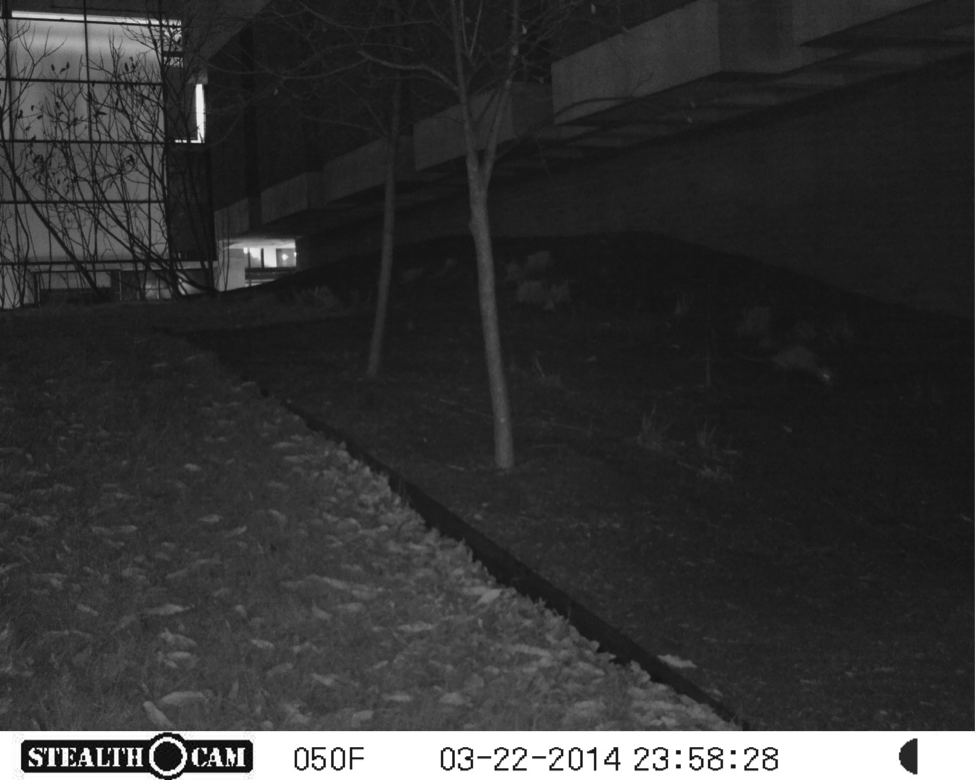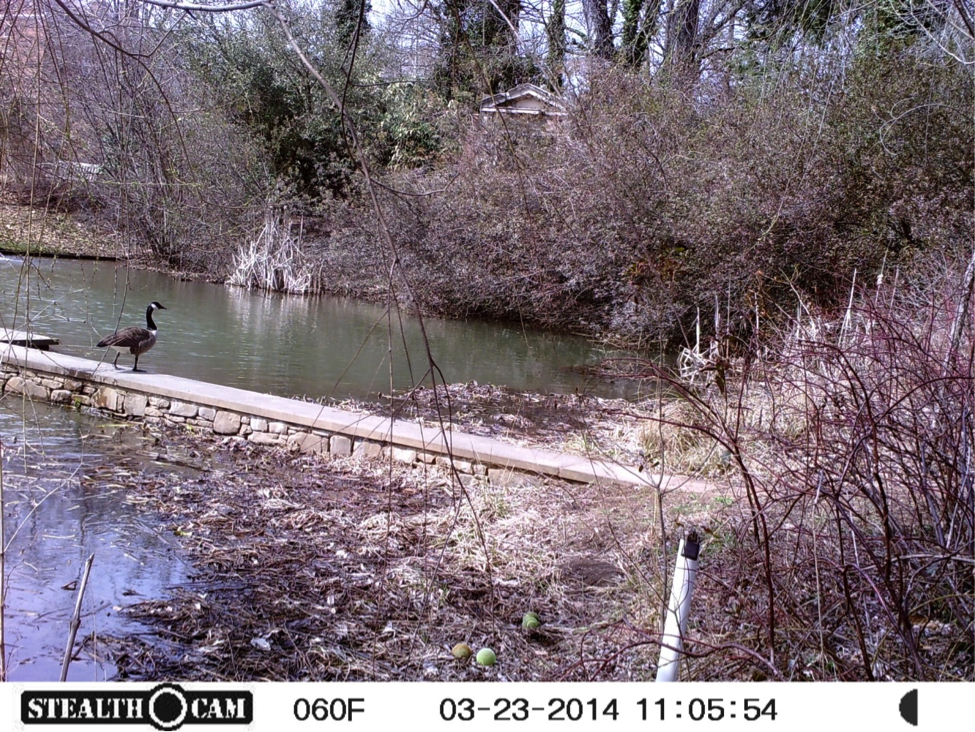With our second week of exploring nocturnal life at UVA completed we are still tackling the learning curve. With all five camera traps set in place, we choose locations this week that we believed would catch some type of nocturnal life on grounds. The biggest obstacle of the week was underestimating the amount of foot traffic in some of the locations, as well as our secondary issue of needing to rethink locations maybe in a different viewpoint.
Our camera trap on the rugby side of the Architecture school in the garden caught some nocturnal life. We captured a picture of an opossum wandering around the wall right around midnight when little to no foot traffic was present. Opossums are a solitary animal which explains why only one showed up on camera; it has been shown that these animals are creatures of habit and will remain in an area as long as resources remain. Due to this information it would be interesting to see if any opossums will come back to the area the remainder of the study.
Our trap in the Dell proved to only find pictures of ducks and had a very surprising amount of foot traffic for the area that it was placed in. The original hope was to capture images of animals maybe using the water as a water source but none showed up. There are multiple reasons this could have happened due to either the random weather patterns we have been experiencing or the foot traffic of human night life scaring of any animals that would use this source. Due to the fact that the camera was placed there for a week, we have decided to move on from this location for now and will maybe come back to it in a few weeks to see if the weather had any significant impact. The traps in both the garden near the lawn and a location behind the IRC both resulted in no nocturnal life.
With no success in four of the five cameras, we have decided to once again try out new ideas. Our current course of action has been to place cameras in areas where we ourselves have seen nocturnal activity. Although this approach hasn’t been as affective as hoped, we have been able to receive a few promising pictures that can give us an idea of locations to look for as we decide where to place the camera traps. As we initially agreed, we have not set out any form of bait to lure in the animals because we wanted to see what animals would naturally come to a particular area. The group will discuss in over the next week whether or not we plan to continue this or if baiting may be a sufficient idea in order to see what nocturnal life there is around the area regardless of the specific function it would have come to the area for.
Post by Megan Waring, Second-Year, Civil Engineering

